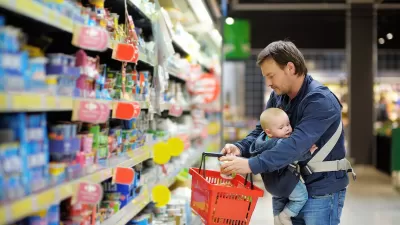Minneapolis’ Healthy Corner Store Program launched with lofty ambitions in 2009—to help corner stores market and sell fresh food—but lackluster performance has required the city to reduce the scale of the program.
Citing lackluster performance, Minneapolis is cutting back its Healthy Corner Store Program, from 40 to just 10 stores, reports Maya Rao.
Under the program, “city health workers and nonprofits have encouraged corner stores not only to sell more produce, but also to display it more prominently and be part of community outreach.”
The good intentions of the program, however, were not enough to keep the program on track: “several stores in the program closed, and others struggled to maintain the quality and appearance of produce displays.”
One takeaway that could indicate a possible way forward for the program: “the city realized that it needed to have more intense, long-term relationships with store owners to convince them that stocking healthy foods could actually make money. Without those, according to one city official, the effort was not sustainable: Staff would return a few weeks later and find produce wilted, bruised and forgotten.”
Although participating stores report that they were happy to work with the city to attract new customers. But produce just hasn’t sold as hoped. “Health specialists also calculated that stores on average were selling less than $10 a week of produce,” reports Rao.
FULL STORY: Minneapolis cuts back program to bring fresh food to small city stores

Trump Administration Could Effectively End Housing Voucher Program
Federal officials are eyeing major cuts to the Section 8 program that helps millions of low-income households pay rent.

Planetizen Federal Action Tracker
A weekly monitor of how Trump’s orders and actions are impacting planners and planning in America.

The 120 Year Old Tiny Home Villages That Sheltered San Francisco’s Earthquake Refugees
More than a century ago, San Francisco mobilized to house thousands of residents displaced by the 1906 earthquake. Could their strategy offer a model for the present?

HSR Reaches Key Settlement in Northern California City
The state’s high-speed rail authority reached an agreement with Millbrae, a key city on the train’s proposed route to San Francisco.

Washington State Legislature Passes Parking Reform Bill
A bill that would limit parking requirements for new developments is headed to the governor’s desk.

Missouri Law Would Ban Protections for Housing Voucher Users
A state law seeks to overturn source-of-income discrimination bans passed by several Missouri cities.
Urban Design for Planners 1: Software Tools
This six-course series explores essential urban design concepts using open source software and equips planners with the tools they need to participate fully in the urban design process.
Planning for Universal Design
Learn the tools for implementing Universal Design in planning regulations.
Ada County Highway District
Clanton & Associates, Inc.
Jessamine County Fiscal Court
Institute for Housing and Urban Development Studies (IHS)
City of Grandview
Harvard GSD Executive Education
Toledo-Lucas County Plan Commissions
Salt Lake City
NYU Wagner Graduate School of Public Service




























